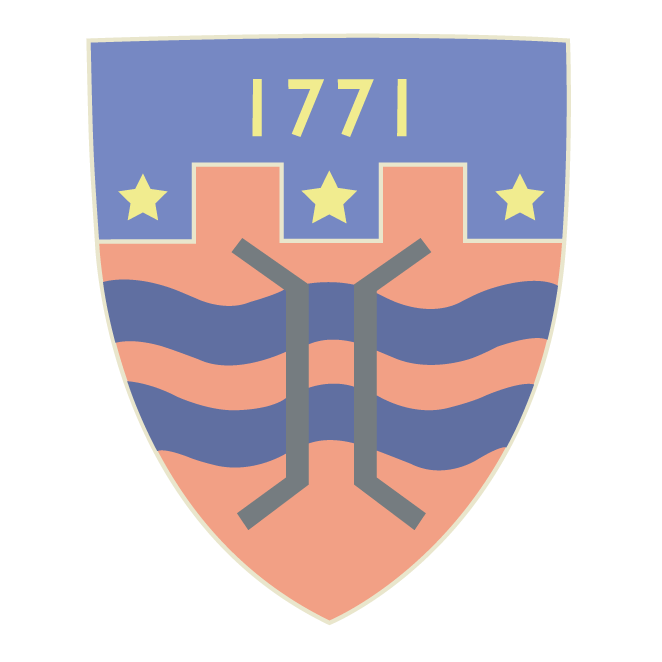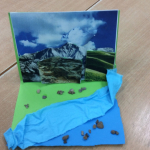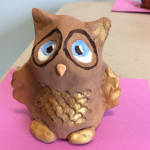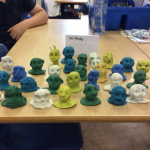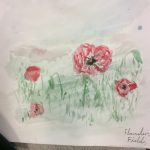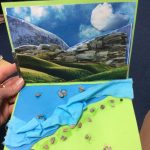Our art curriculum is designed to allow pupils to draw, paint and make with growing confidence, control and thought. Some art teaching is discrete whilst other lessons follow the phase topics.
Skills
We have designed a progression of skills throughout each phase in:
- Drawing
- Painting
- Printing
- Collage
- 3D form
- Amazing Artists
Statement of Intent
We offer a structure and sequence of lessons which helps teachers ensure they have covered the skills required to meet the aims of the national curriculum. The intent is to ensure all pupils produce creative, imaginative work. Children have the opportunity to explore their ideas and record their experiences, as well as exploring the work of others and evaluate different creative ideas. Children will become confident and proficient in a variety of techniques including drawing, painting, printing, as well as other selected craft skills, e.g. collage, 3D form, weaving and patterns. Children will also develop their knowledge of famous artists, designers and craft makers. Children will also develop their interest and curiosity about art and design through a series of lessons, over a two-year cycle, offering skills progression, knowledge progression and offering children the opportunity to ask questions and demonstrate their skills in a variety of ways. The lessons will offer the chance for children to develop their emotional expression through art to further enhance their personal, social and emotional development. We believe in ‘learning for all’ and this includes art and design, where vulnerable children may seize the opportunity to flourish and gain in self-belief. Reasonable adjustments are made to ensure all children are included.
As pupils progress they are encouraged to think critically and develop a more rigorous understanding of art and design. They should also know how art and design both reflect and shape our history, contribute to culture, creativity and the wealth of our nation.
We seek to inspire in pupils a curiosity and fascination about the world and its people, which will remain with them for the rest of their lives, equipping them well for the future.
Visual arts are celebrated through clubs, performances, competitions and events involving others. (Arts evenings, art clubs, art days).
Implementation
Each unit comes with an overview of lessons, a clear skills progression and an end of unit final piece. Each key stage focuses on different themes to ensure continued interest in the subject as well as acquiring new knowledge. The lessons develop their techniques, including their control and their use of materials, with creativity, experimentation and an increasing awareness of different kinds of art, craft and design. A specific series of lessons for each year group, offer structure and narrative and a golden thread of knowledge links all Key Stages and builds on a development of skills and knowledge. All children should have the opportunity to produce creative work, explore their ideas and record their experiences. They should be supported to become proficient in drawing, painting, printing, sculpture and other art and craft techniques. They will be able to evaluate and analyse creative works using the language of art, craft and design.
Children use sketch books to record their observations, ideas and work in art and use them to revisit and renew their ideas.
Impact
Art and design learning is loved by teachers and pupils across school. Teachers have high expectations and more quality evidence can be presented in a variety of ways. All children use technical vocabulary accurately and pupils are expected to know, apply and understand the matters, skills and processes specified. Children improve their enquiry skills and inquisitiveness about the world around them, and their impact through art and design on the world. Children will become more confident in analysing their work and giving their opinion on their own and other works of art. Children show competences in improving their resilience and perseverance by continually evaluating and improving their work. All children in school can speak confidently about their art and design work and their skills. High quality displays in school reflect the breadth and depth of art and design work across the phases, with one main corridor display showing the progression of skills in art during a term. Subject Lead monitors teaching and learning in art through looking at planning and looking in children’s sketch books and observing art and design across the school. Teachers assess art annually on O Track and in end of year reports – these judgements are recorded and moderated within phase teams.
In EYFS, judgments of children’s developmental stages are made against Expressive Arts and Design statements in Development Matters. These are based on in-depth observation of children engaging with carefully planned and modelled art provision indoors and out.
